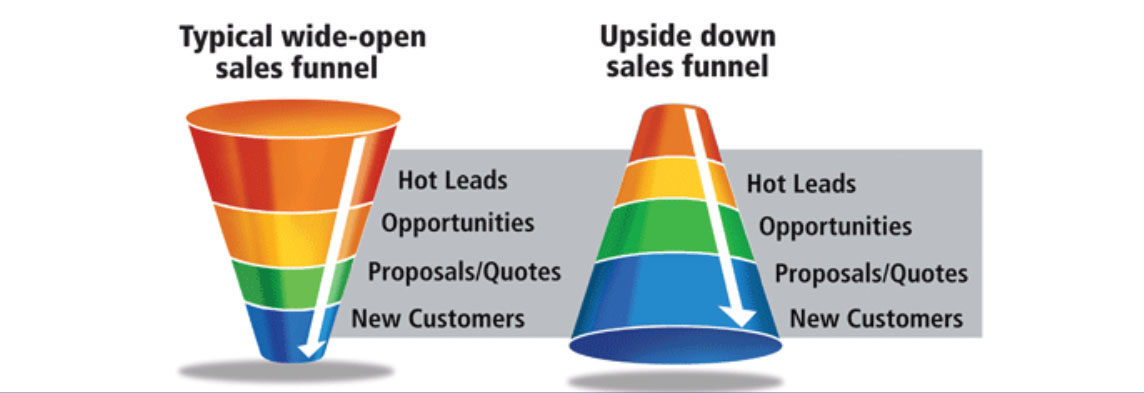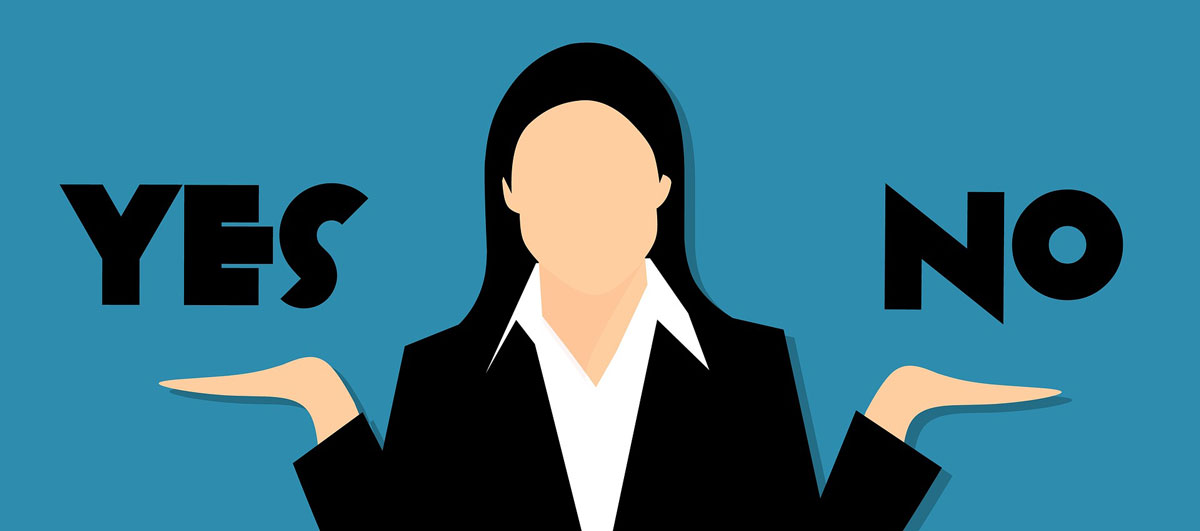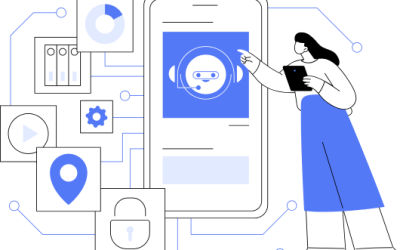When we go to business networking events and ask, “who is your audience,” we often here a one-word answer. Everyone! This answer is usually the result of a very ambitious new-to-sales salesperson or an unclear understanding of the company’s target customer. When there is not a clear understanding of your target, it is hard to know which leads are qualified and which ones are not. When you don’t have a clear target, every lead that comes in, qualified or not, must be followed up. As we have written in the last couple of blogs, this leads to Follow Up Fatigue.
Most sales funnels have wide tops that narrow in the shape of a traditional funnel. What if your sales funnel was flipped upside down? Consider the Upside-Down Sales Funnel which is not wide open at the top for all leads. Rather it is narrow and is designed to capture qualified leads.
A sales funnel is a very good tool for a sales team to track hot leads, opportunities, proposals/quotes, new customers. A sales process that focuses sharply on pre-defined targets will produce greater sales conversions and greater sales efficiency. The Upside-Down Sales Funnel will help you prevent filling your sales funnel with unqualified leads that produce Follow Up Fatigue.

So, who is a qualified lead for your business? In other words, who is your target audience. To figure this out, here are three questions you can ask yourself and your team.
- Can I state the problem my product or service solves in no more than 2 sentences?
When you can articulate the problem you solve in 1-2 sentences your target audience will know immediately that you are the right choice. This shows that you are confident in your product and service and that you can guide your prospect to a solution. You also can identify prospects who are likely to have the problem you solve and focus your outreach on them using industry and geographic segmentation. In both cases, you cannot be everything to everyone or, in B2B, sales, you are likely to fill your sales funnel with many unqualified leads.
- Can I describe how my product or service is unique and different?
If you are in an industry that is saturated with others selling the same service, you all have the same uphill battle. Beyond solving the problem of your target audience, what else do they want? What else can you offer your audience that makes them feel more valued with you than your competitor? Is it customer service? Is it relationship? Is it optional features with your product or service? You need to be creative, and the best way to be creative is listening to your target audience first and taking their needs and concerns into consideration before taking action. Differentiate yourself and show the impact your unique product or service has on your target audience and you will narrow the top of your funnel.
- Can you describe your ideal future client?
We all have those clients with whom we would rather not work. They may be difficult, hard to please or high maintenance. We also have in our heads the perfect or ideal client. Review your current clients and identify what are the commonalities across clients. Review how you solved their problems and what can you do for them next.
We recommend that you put the characteristics of the ideal client down on paper. Even better, do this as a team exercise. Everyone will have great ideas and working together, you will create the ideal future client. The ideal client, similar to a persona, will guide you in your marketing and sales presentations. You will begin to see more qualified leads that have the characteristics of your ideal client enter your sales funnel.
We all know that everyone is not our target audience, but we fall into the “everyone” trap when we do not have a clear understanding our solution, uniqueness, and ideal future client. Addressing these three questions will help you flip your sales funnel upside down so that you can capture qualified leads.





